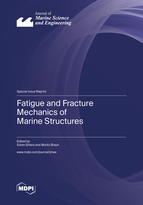Mechanical Reliability Analysis of Flexible Power Cables for Marine Energy
Round 1
Reviewer 1 Report
The paper discusses the modelling of mechanical forces on flexible power cables used in the wave and tidal energy generation. As these mechanical forces can infringe the reliability of the power cables during the operational lifetime. The paper has a clear structure and describes the different parameters that have been taken into account. It is understood that there is a model used for simulating the different forces acting on the cable and that also the variations in the model parameters have been analysed by means of a VMEA. Although the paper is clearly written I have some comments which could be implemented.
In paragraph 3.3.5 is shortly described that laboratory tests have been performed. However, there is no feedback described how well the testing results are in compliance with the overall model.
In paragraph 3.4 is the probabilistic VMEA table discussed that can be found in appendix I. The values obtained and presented in the table are only very marginal explained in the text. For the reader it is difficult to interpret the given values and also what in the end the 19.4% total uncertainty tells us and how this reflects back to the model. Therefore, it would be beneficial to guide the reader through the table I and explain how the values influence/improve the model.
In chapter 4, the conclusions, it would be good to reflect back to the obtained model and to conclude on how well the model fits and can be further developed for future applications.
Author Response
See the attached Word file.
Author Response File: ![]() Author Response.docx
Author Response.docx
Reviewer 2 Report
- The abstract is too long
- It is necessry to add stress analysis. In the paper Authors wrote about stress but without any analysis
- p.5, l. 217 - why is it was used 105. Typicaly in fatigue problems are used 106 or more?
- p.8, l.312-315: the Wohler curve and Basquin curve isnot the same. The wohler curve is function S-log N, the Basquin one is log S- log N. See for example: KUREK M., ŁAGODA T., KATZY D., Comparison of fatigue characteristics of some selected materials, Materials Testing (Materialprufung), Vol.56, 2014
- Genneraly the fatigue problem in this paper is poor. It is necessry to increese this subject also in references
Author Response
See the attached Word file.
Author Response File: ![]() Author Response.pdf
Author Response.pdf
Reviewer 3 Report
The paper titled "Mechanical Reliability Analysis of Flexible Power Cables for Marine Energy" with Manuscript Number jmse-1741066 is recommended for minor corrections.
STRENGTHS:
- Good flow, outline and presentation of the application of FLEXIBLE POWER CABLES.
- Good presentation of the REVIEW and Reliability study.
- Good discussion and conclusion.
- Good introduction but must be improved.
- Good highlights and abstract.
- Authors have good knowledge of the subject area.
- Good understanding of the work. It is evident in Good presentation of the work.
WEAKNESSES:
- The paper has good content but some revision in the writing is needed. However, keep the contents of Section 4 as Discussion.
- Add a new section as Section 5 CONCLUSION. In the conclusion, add more highlights and key findings from the paper as appropriate. Also, add the limitations of this study model in the revision.
- Revise the introduction and also offshore reliability studies in the discussion of the applications- specific marine offshore applications with some references, as it currently shows general applications.
- Some proof reading and minor English language editing is recommended.
- You may add some background governing equations used on flexible cable design as it is a technical academic writing - also equations that are not original to the authorship should be referenced. It currently has only generic reliability studies.
- It is a technical academic writing as in page 15 line 542, as seen in: "We therefore suggest constructing an extra safety factor based on engineering judgment. " .
- Add references to show current energy development in flexible power cables in introduction.
- Add a table of some parameters used in the Reliability study for the flexible cable. The reliability study shows a review of mathematical models on reliability. However, what are the details of the model used to validate the study for the flexible cable?
- It is not very clear how the generic reliability models in the present study were applied here? Or is it a review of the different models?
Author Response
See the attached Word file.
Author Response File: ![]() Author Response.docx
Author Response.docx
Round 2
Reviewer 2 Report
It may be published as is






